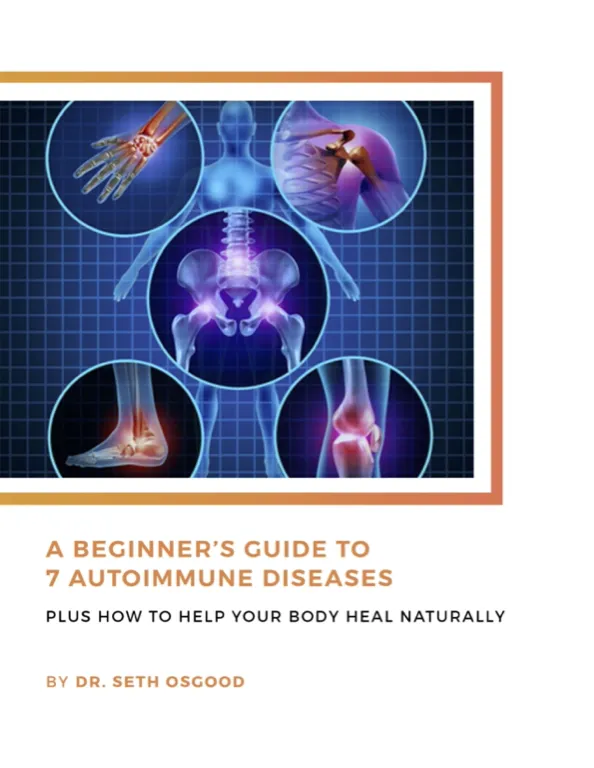Many people are aware of the various problems that suboptimal thyroid function can have on your overall health. A common question from those concerned about their thyroid function is, “What labs should I have ordered to see if my thyroid is where it is supposed to be?” When you have your thyroid markers assessed through your primary care physician or endocrinologist, they will often complete a very basic analysis and then proceed to make general assumptions based on one particular marker – thyroid-stimulating hormone (TSH). However, although TSH is important to assess, it gives an incomplete picture of what’s going on with the thyroid and how it’s interacting with the rest of the body. To make a more well-rounded decision about which labs you’d like to ask your healthcare professionals to order, start by reviewing the top 11 essential markers and their optimal ranges below.
1. TSH- Thyroid Stimulating Hormone (TSH)
[Lab Range: 0.40-4.50 mIU/L, Optimal Range 0.4-2 mlU/L]
The hypothalamus is a structure in the brain that is considered the control center for the body’s endocrine system. When the hypothalamus detects low levels of circulating thyroid hormones, it releases thyrotropin-releasing hormone (TRH), which then signals the anterior pituitary gland to release TSH. Next, TSH travels down to the thyroid gland where it binds to thyroid cell receptors and stimulates the thyroid gland to make thyroid hormones (primarily thyroxine or T4).
This is a tricky lab to interpret and confuses many people. It is important to remember that when TSH levels are low, this suggests that thyroid levels are high. In contrast, when TSH levels are elevated, this indicates an under-active thyroid or hypothyroidism.
A simple way to keep the interpretation of this lab straight is to remember what TSH stands for: “thyroid-stimulating hormone.” It stimulates the thyroid to make more hormone when circulating hormone levels are low. Although this is a great indicator of what the brain thinks is going on from a thyroid standpoint, it doesn’t tell us much about the amount of hormone that is freely available for the cells to use for metabolism. It is not uncommon for people to have TSH levels within normal range who also have hypothyroid symptoms.
Plus, it is important to note that the brain is a pretty intelligent design. Although some patients on thyroid hormone replacement who still have suppressed TSH are told by their practitioners that this is “normal,” that is not necessarily the case. When the thyroid is truly balanced, all of the thyroid markers are within optimal range. If one or more labs are not normal, this indicates something is out of balance. Therefore, it is important to look at the big picture for nutritional deficiencies, toxins, infections, or other stressors that may be preventing your thyroid from functioning at full capacity.
2. Free T4
[Lab Range: 0.8-1.8 ng/dl, Optimal Range 1.1-1.6 ng/dl]
Thyroxine or T4, is the primary hormone produced by the thyroid gland and is formed when four iodine atoms (which is why it is called T4) combine with the amino acid, tyrosine. T4 is transported throughout the body bound to proteins produced primarily in the liver. The T4 hormone that is unbound and freely available for the body to use is called Free T4. Although T4 is the most abundant hormone produced by the thyroid, it is significantly less active than its counterpart triiodothyronine (T3). If you are lucky enough to get your practitioner to check another thyroid test, it is usually Free T4. The problem again is that this marker by itself is a poor indicator of how much active thyroid hormone is available for the body to use at a cellular level.
3. Free T3
[Lab Range: 2.3-4.2 pg/ml, Optimal Range 3.0-4.2 pg/ml]
The thyroid gland produces significantly lower amounts of triiodothyronine (T3) when compared to T4, but the T3 is what does the majority of the work. As with Free T4, the Free T3 represents the amount of active T3 hormone that is unbound to protein and freely available for the cells to use for energy. T3 is the hormone responsible for the majority of the metabolic effects the thyroid has throughout the body.
Since the thyroid doesn’t produce a significant amount of T3, the body has to convert circulating T4 to the active T3 through what is called the deiodinase system. Deiodinase is an enzyme that selectively removes iodine atoms from T4 to create the different thyroid hormones, including T3 (three iodine atoms). This process of conversion from inactive T4 to active T3 occurs in multiple tissues and organs throughout the body but is most pronounced in the liver, gut, skeletal muscle, brain, and the thyroid gland itself.
It is not uncommon for people to have low Free T3 levels while also having normal TSH and Free T4 levels. This is incredibly frustrating because your doctor will often tell you there is nothing wrong with your thyroid! However, they are not completely incorrect in their statement. When TSH and T4 hormones are within optimal range and Free T3 is low, this typically means there is a problem with hormone conversion, not necessarily a problem with the thyroid itself.
Remember, conversion occurs in the liver, gut, brain, skeletal muscles, and the thyroid. If there are problems within these systems like infections, inflammation, stressors, or deficiencies, the conversion does not occur. The Band-Aid approach is to take T3 hormone by itself. Although this may be necessary at times to help you feel better, it is still important to search for the root cause of why conversion is not naturally occurring.
4. Reverse T3
[Lab Range: 8-25 ng/dL, Optimal Range 8-15 ng/dL]
Reverse T3 (RT3) is a critical marker to evaluate. It is often elevated in the scenario where Free T3 is low. The difference with RT3 is that it is an inactive thyroid hormone. Although it is not entirely understood, the theory is that the body converts T4 to RT3 in times of psychological, emotional, or physiological stress in an attempt to conserve thyroid hormone. Nutrient deficiencies can also play a part in poor thyroid conversion, specifically low selenium and zinc. The problem with the body’s conservation of hormones is that when the RT3 levels increase, the Free T3 (active thyroid hormone) levels typically decrease. This leaves people feeling fatigued, cold, with brain fog, constipation, and all of the many other symptoms of hypothyroidism. A general rule of thumb is to have RT3 levels less than 15 ng/dl with optimal Free T3 values. If RT3 is elevated, you need to identify and correct the stressors that are influencing the body.
5. Thyroid Peroxidase Antibodies
[Lab Range: <9 IU/mL, Optimal Range <9 IU/mL]
&
6. Thyroglobulin Antibodies
[Lab Range: ≤1 IU/mL, Optimal Range ≤1 IU/mL]
Thyroid peroxidase (TPO) is an enzyme made in the thyroid gland that aids with the production of thyroid hormones. Thyroglobulin is a glycoprotein produced predominantly by the thyroid gland and also acts as a substrate for the production of T3 and T4 hormones. When the immune system places antibodies (or flags that tell it where to attack) on these thyroid components, it is an indication that an autoimmune thyroid condition is occurring. Normally, the immune system has self-tolerance with the ability to distinguish the body’s own tissue from problematic pathogens (disease causing bugs). When autoimmunity occurs, this indicates the immune system has gone rogue and can no longer distinguish problematic pathogens
7. RBC Zinc
[Lab Range: 9.0-14.7 mg/L, Optimal Range 13-14.7 mg/L]
&
8. RBC Selenium
[Lab Range: 120-300 mcg/L, Optimal Range 255-300 mcg/L]
&
9. Vitamin A
[Lab Range: 38-98 mcg/dL, Optimal Range 68-98 mcg/dL]
There are multiple nutrients involved with thyroid production and function. Zinc and selenium are two essential nutrients that are vital for the production of thyroid hormones and the conversion of inactive T4 to active T3. Zinc and vitamin A, along with exercise, help to improve cell sensitivity. This allows the cells to take in the active hormone to use for metabolism. Vitamin A also activates the gene that regulates TSH production.
When evaluating zinc and selenium labs, it is important to get red blood cell (RBC) markers. RBC levels tell you where the nutrients have been over the last few months as opposed to standard levels that just let you know where you are that day. A great test for evaluating nutrition status is the Genova Nutreval. This is a highly comprehensive nutrition panel that uses both blood and urine to assess vitamins, minerals, fats, proteins, and heavy metals, among several other markers. Testing for deficiencies is an excellent way to make sure your thyroid and other organs have the nutrition that is necessary to function at full capacity. If you are low in specific nutrients, check out this Nutrient Specific Food Guide, which gives you a list of foods that are high in certain vitamins, minerals, fats, and proteins.
10. Ferritin
[Lab Range: 20-345 ng/mL, Optimal Range 70-150 ng/mL]
Ferritin is a protein that stores the majority of the iron that is not being utilized within red blood cells or muscle cells. Iron is essential for thyroid hormone production, but beyond that, low iron levels also contribute to many of the symptoms that often get blamed on low thyroid function. Having extreme fatigue, hair loss, shortness of breath, a weakened immune system, among several other problematic symptoms can all be seen with low iron. Typically, people with a ferritin below 50 ng/ml are symptomatic, but functional medicine practitioners often shoot for optimal levels between 70-150 ng/mL.
Another thing to know about ferritin is that it is what we call an acute phase reactant. This means that if you have systemic inflammation, your ferritin will often be elevated. Too little or too much iron is not a good thing. This is why it is important to get a full iron panel that includes ferritin to make sure you are within that ideal range.
11. Iodine Random Urine
[Lab Range: 34-523 mcg/L, Optimal Range 100-300 mcg/L]
Iodine has to be one of the most controversial thyroid labs out there. For starters, there is no perfect test available for iodine. However, urine iodine level tests are relatively accurate and reproducible.
Without adequate iodine, the thyroid progressively enlarges and develops a goiter or nodules in an attempt to keep up with demand for thyroid hormone production. What is confusing about iodine therapy is the fact that some practitioners believe that very high supraphysiologic doses of iodine are essential to treating various thyroid disorders whereas others completely disagree with this approach. In the functional medicine world, laboratory testing can be used to guide iodine replacement therapy in an attempt to achieve optimal levels, preferably with food sources.
It is important to remember that the thyroid is extremely complex and true balance often involves assessing and treating multiple factors. Sometimes the thyroid hormones are not being produced in adequate amounts. In other instances, they are not getting converted appropriately; and sometimes the hormones are present and in the correct forms, but receptor sensitivity issues prevent them from traveling into the cells. Also, when it comes to thyroid health, each person can have optimal levels that vary slightly depending on the individual situation.
If you have a thyroid problem that you want to get to the root of, the GrassRoots Functional Medicine team would love to partner with you on your journey to optimal health. When you’re ready, check out our Adaptation Programs to learn more about our approach and see if it’s the right fit for you. Despite what you may have been told, have hope – solutions are out there!
About the Author: Dr. Seth Osgood is a Doctor of Nursing Practice, Board Certified Family Nurse Practitioner and Institute of Functional Medicine (IFM) Certified Practitioner. Dr. Osgood received his post-graduate training in Functional Medicine through the IFM and from working with Dr. Amy Myers. He has helped people from around the world improve their health utilizing a Functional Medicine approach.






0 Comments